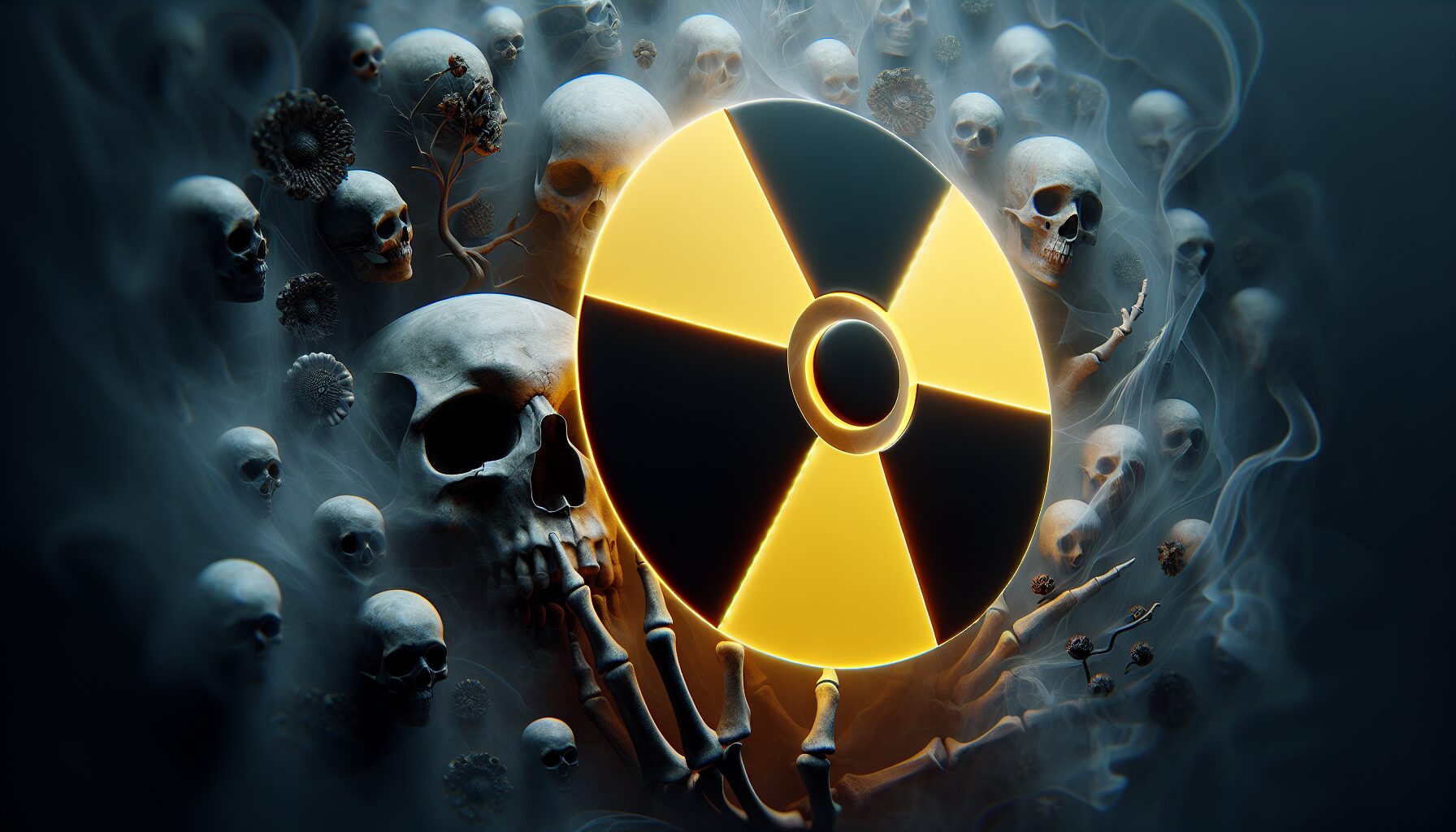Radiation and Mortality – Invisible Forces of Decay
Radiation is an omnipresent force, both a natural and man-made phenomenon, with the capacity to significantly influence human health and mortality. While the sun’s rays nourish life on Earth, other forms of radiation can be insidious, invisible forces contributing to decay and disease.
Understanding Radiation
Radiation refers to the emission and propagation of energy in the form of waves or particles. While energy waves such as light and heat are vital for life, ionizing radiation, which includes X-rays, gamma rays, and particle bombardments, holds the potential for damage at the cellular level.
“Radiation exposure has the potential to cause health effects.” – World Health Organization
Types of Radiation and Their Sources
Radiation is categorized into several types, each with distinct characteristics and sources:
- Alpha Radiation: Comprising heavy particles, alpha radiation is not deeply penetrating, but can be harmful if ingested or inhaled.
- Beta Radiation: Lighter than alpha particles, beta particles can penetrate the skin and cause damage.
- Gamma and X-Rays: High-energy waves that can penetrate deeply into the body, where they are most hazardous.
- Natural Sources: Radon gas, cosmic rays, and terrestrial sources contribute to background radiation.
- Artificial Sources: Medical imaging, nuclear power plants, and atomic testing are significant contributors to man-made radiation exposure.
Health Impacts of Radiation Exposure
The effects of radiation on health depend on several factors including the dose, duration, and type of radiation. Acute high doses can lead to radiation sickness, while chronic low doses increase the risk of cancer and genetic damage.
Acute Radiation Syndrome (ARS)
ARS, also known as radiation sickness, occurs after high-dose exposure (>1 Gy) over a short period. Symptoms range from nausea and vomiting to bone marrow failure and death. The most infamous example of ARS is the aftermath of the Chernobyl disaster.
Cancer and Genetic Mutations
Low doses of radiation over extended periods can increase the likelihood of cancer development. Radiation is a proven carcinogen, causing malignancies such as leukemia, thyroid cancer, and breast cancer.
According to the National Cancer Institute, “Ionizing radiation acts as a carcinogen primarily by damaging DNA.”
Case Studies: Historical Impacts of Radiation
Chernobyl Disaster
The 1986 Chernobyl nuclear power plant meltdown is a stark example of radiation’s destructive power. Major health effects were observed, including ARS in workers, a spike in thyroid cancer cases, and long-term environmental degradation.
Atomic Bombings of Hiroshima and Nagasaki
The atomic bombings in Japan in 1945 exposed civilians to intense radiation. Survivors, known as Hibakusha, experienced acute health issues, cancers, and hereditary effects passed down to future generations.
Radiation Protection and Safety
Protection from harmful radiation involves minimizing exposure, utilizing protective equipment, and adhering to safety protocols. The principle of ALARA, “As Low As Reasonably Achievable,” guides safety practices by minimizing exposure through time, distance, and shielding.
Personal Protective Measures
- Limit Exposure Time: Reducing the time spent near sources of radiation decreases risk.
- Maintain Distance: Increasing distance from the radiation source reduces exposure according to the inverse square law.
- Use Shielding: Employing materials such as lead and concrete can block or reduce radiation levels.
Future Perspectives
Technological advances and increased awareness are driving improvements in radiation management. Innovations in medical imaging, nuclear technology, and space exploration depend on effective radiation shielding and monitoring techniques.
Conclusion: While radiation is an invisible force with potential adverse effects, understanding and managing exposure remains crucial. Comprehensive education and strict adherence to safety measures ensure that radiation serves as a tool for progress rather than a harbinger of decay.

Comments